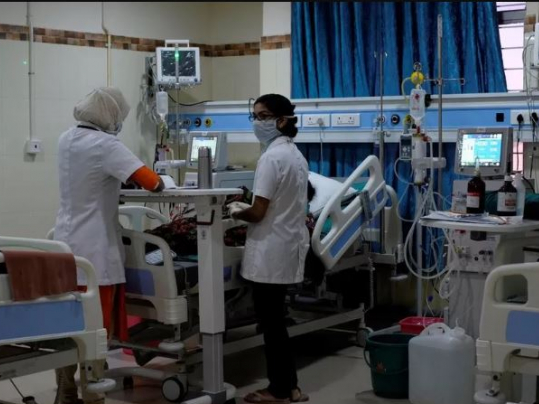How Listening To Bacteria’s Movement Could Help Treat Antibiotic Resistance

The sound of bacterium tails, or flagella, engaging with the graphene drum and causing back-and-forth movements known as oscillations was actually heard by the researchers. This could be the gateway to understanding how listening to bacteria’s movement could help treat antibiotic resistance.
Experiments on “listening to” bacteria’s motion are bound to raise some eyebrows, but scientists appear to be upbeat. They suggest that studying such a “sonata” will aid doctors in their research into antibiotic treatment.
Have you ever heard the sound of a bacterium symphony? With the use of a graphene drum, Dutch scientists were able to capture “the sound of a single bacterium.”
Scientists from the Delft University of Technology in the Netherlands presented the findings of their investigation in the journal Nature Nanotechnology.
Scientists were able to “listen” to the sound of E. coli bacteria moving around in the water by using an ultra-thin bilayer membrane made of graphene, that is sometimes alluded to as a “wonder material” because of its sensitivity to stimulation. In the intestines of healthy people and animals, this type of bacterium is common.
Cees Dekker, a co-author of the paper and a researcher at Delft University of Technology, said during a statement that what the researchers discovered “was striking.”
The sound of bacterium tails, or flagella, engaging with the graphene drum and causing back-and-forth movements known as oscillations, according to Dekker, was actually heard by the researchers. Such oscillations cause vibrations on the surface of the material, which the scientists transformed into sound that they were able to record.
Another co-author of the research, Farbod Alijani, stressed that “to understand how tiny these flagellar beats on graphene are, it’s worth saying that they are at least 10 billion times smaller than a boxer’s punch when reaching a punch bag.”
“Yet, these nanoscale beats can be converted to soundtracks and listened to – and how cool is that,” Alijani continued.
Many people may scratch their heads and ponder if this research is pointless and only necessary for amusement. No way, say the researchers, who emphasize that the trial is critical to the advancement of modern medical knowledge.
The researchers discovered that if bacteria were resilient to an antibiotc, their beats would persist, however if the bacteria were vulnerable to the drug, the “song” diminished until it was entirely lost.
Peter Steeneken, one more co-author of the study, pointed out in this regard that the experiment “would be an invaluable tool in the fight against antibiotic resistance, an ever-increasing threat to human health around the world”.
He emphasized that in the coming years, the scientists intend to improve their “single-cell graphene antibiotic sensitivity platform” and verify it against “a variety of pathogenic samples so that eventually, it can be used as an effective diagnostic toolkit for fast detection of antibiotic resistance in clinical practice.”
- Source : GreatGameIndia


















